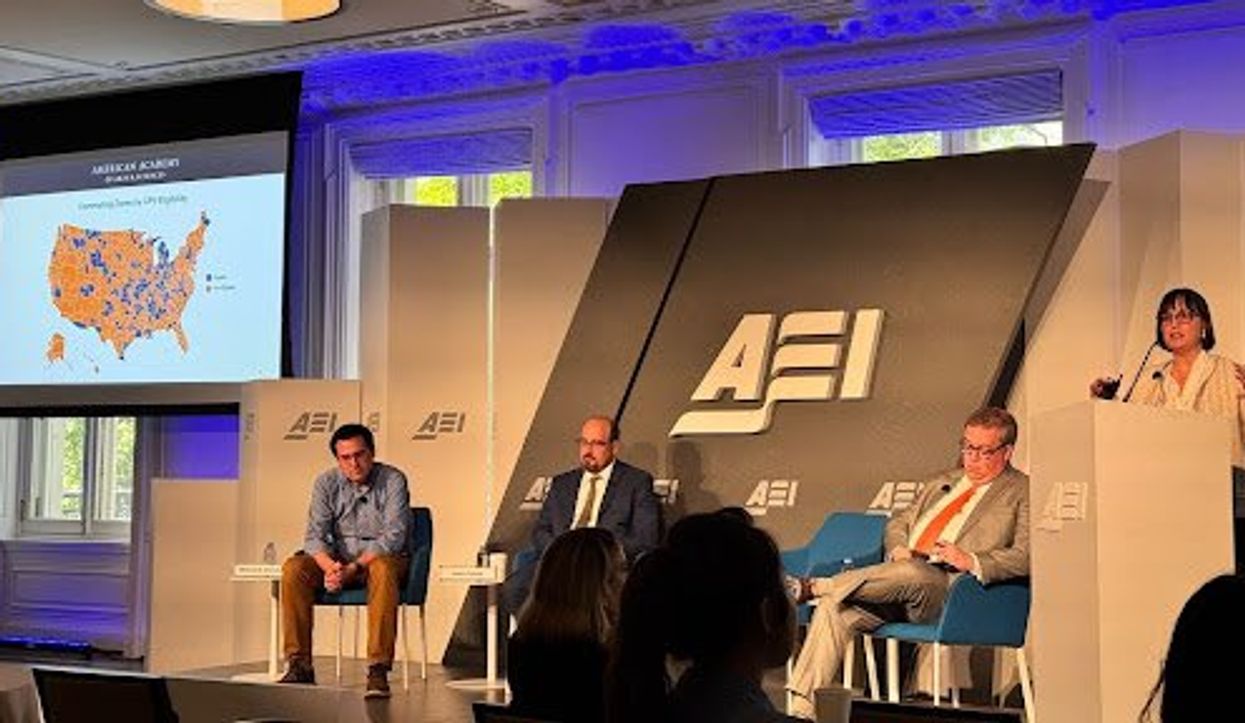Immigration has taken center stage in political discourse across the United States for more than a decade. A politically divided two-party system continues to claim it holds the solution to a deeply complex system. Meanwhile, immigration raids have increased since President Donald Trump took office. Yet some believe the issue remains worth tackling because the country has not fully recognized the power of immigrant labor.
One group believes it has found a bipartisan solution by proposing the Community Partnership Visa. The place-based visa aims to boost local economic growth and allow counties across the country to benefit from immigration, if it proves successful.
The American Academy of Arts and Sciences introduced the proposal in May at the American Enterprise Institute. The program builds on previous concepts, offering a restructured visa for immigrants who qualify as a “source of economic growth.” Under the plan, states or municipalities would sponsor immigrants directly.
According to the academy’s research, most immigrants settle in a small number of cities and towns, meaning many parts of the country have not “benefited from immigration, which can reverse trends of economic stagnation, population decline, and labor shortages.”
“It should be flexible,” said Jonathan Cohen, a senior program officer at the American Academy of Arts and Sciences. “If a community needs agricultural workers, or if it needs nurses, or if it needs professors, there should be a way to modulate the community's needs.”
Cohen said the CPV stands apart from other programs, such as the Heartland Visa, which focus only on high-skilled workers.
But immigration remains a politically and legally complex issue, and federal authorities currently control the decision-making process.
The CPV would resemble existing programs like the H-1B and H-2B visas by issuing roughly 65,000 to 66,000 visas annually. Proponents argue that figure would support “meaningful economic revitalization.” Under the proposal, recipients would agree to live and work in their assigned community. If they fail to secure employment, they could petition to move to another eligible area.
Jessica Vaughan, director of policy studies at the Center for Immigration Studies, has followed immigration policy closely, including past efforts to create place-based visa programs. She said these standards are not realistic.
“Green cards are in such demand,” said Vaughan. “Unfortunately, it is likely that people would take advantage of being able to get a green card through a program like this, and then just move wherever they want.”
Vaughan said current green card holders have the right to live and work wherever they choose. She warned that the CPV would represent a major policy shift and could result in misuse.
When immigrants enter the country with the intention of helping a local government but later decide to relocate, Vaughan argued, the government cannot force them to stay.
“There must be a reason why Americans don’t want to live there,” she added. “Why should we expect immigrants to want to live there if it’s not able to do well with Americans living there?”
Vaughan said qualifying counties should focus on improving living conditions to naturally attract employers and residents. She argued that the visa program would act as a temporary fix, using immigrants as a bandage to cover broader structural problems.
Cohen said the opposite sometimes proves true in struggling regions.
“There are places where Americans should and could do these jobs, but for whatever reason, they don’t want to,” he said. “Or they’re not choosing to move to suburban Cleveland for example, and those communities as a result are aging and losing the working age population.”
But immigration remains a complex political and humanitarian issue, and the federal government continues to hold authority over it.
Vaughan said systemic issues, including fraud and integrity problems, plague current visa programs and have gone unaddressed.
“The problem with this [the CPV] is that under our constitution, immigration and the regulation of it is a federal responsibility,” said Vaughan, voicing concern that the program would change how green cards are distributed.
“This proposal is seeking for the federal government to allow state and local governments to run a small immigration program,” she said.
The American Academy of Arts and Sciences acknowledged it must conduct further analysis on some elements of the plan. The group would also need congressional approval for the program to move forward.
Cohen remains hopeful that lawmakers will consider the idea or a version of it.
“Especially because of this current state of the immigration debate, there is some momentum for this idea of a place-based visa program,” he said.
Angeles Ponpa is a graduate student at Northwestern Medill in the Politics, Policy, and Foreign Affairs specialization, and a Fulcrum summer intern.
The Fulcrum is committed to nurturing the next generation of journalists. To learn about the many NextGen initiatives we are leading, click HERE.



















